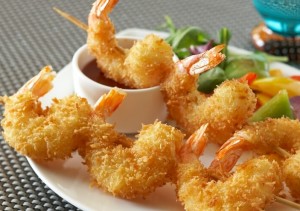
Light & Crispy Shrimp Skewers made with Authentic Japanese Panko from Upper Crust Enterprises.
Panko (Japanese breadcrumbs) is a unique breadcrumb that is used in many Japanese dishes as a coating for baked and fried foods. Panko has become popular in all types of menus because of it’s versatility in the kitchen. It adds a light crispy texture to coated items and it is frequently used as a top crusting, coating, mix-in, extender, and stuffing. Panko was invented during World War II by the Japanese and the word comes from two older words; “pan”, meaning bread, and “ko” meaning small pieces. Some of the world’s best Panko is produced in Japan. Since there are now many commercial sources for Panko, it’s important to know what to look for. Not all Panko is created equal!
Panko breadcrumbs are made from grinding yeast-risen bread, which is baked using electric current instead of heat. This type of bread has no crust; instead, the entire loaf consists of the soft and airy bread center. Panko adds crispiness but, being neutral in flavor, it does not overpower the item it is coating. Here are a few tips to keep in mind when looking for an authentic Panko that will provide the work best in your restaurant.
The top three reasons you should use an Authentic Japanese Panko in your recipes include:
- Authentic Panko adds a light, crispy texture when used as a coating or topping.
- Authentic Japanese Panko crumbs (large and sliver shaped) create great plate presentations.
- Authentic Japanese Panko helps retain moisture when used as a mix in to many food items such as meatloaf, meatballs, crab cakes, and stuffing.
The best results only come from selecting Authentic Japanese breadcrumbs. Look for products which have these crumb traits:
- Panko Crumbs are long, sliver or flaked in shape (see ‘a’ below) – provides better plate presentation and better coating yield
- Panko Crumbs which have a light and airy texture. Only light and airy crumbs will delivering a crispy delicate texture
- Avoid Panko that is round in shape with a hard dense crumb.
A light and airy Panko delivers two major advantages; optimal crispiness and better yield. Since Panko is often used as a coating or topping, dense Panko often over-powers the entree. In addition, Panko is sold by the pound, but used by volume. Optimize your recipes by choosing a light and airy Panko! Try a simple yield test and see which product has more volume at the same weight. In some cases the yield difference between products can be 30-50%. (See Panko weight comparison picture). Finally, authentic Panko is not expensive – less than a penny more per meal.
Because it is airy and sliver shaped, Authentic Japanese Panko from Upper Crust Enterprises offers 30% to 50% more yield per grams used compared with other hard, round Pankos.
This simple yet versatile ingredient adds texture, variety and new life to a wide range of menu opportunities from appetizers to desserts. It’s great as a coating or top crusting for seafood and chicken, and creates signature crispy onion rings and cheese sticks. Chefs can also create exciting new desserts by adding it to crispy cobbler toppings, fried ice cream or even as an ingredient in cookies!
There’s a world of uses for a quality Authentic Japanese Panko! From traditional Japanese menu items, to creating new twists on favorite desserts and popular comfort foods, Upper Crust Enterprises Panko helps you create exciting new menu options your customers will come back for!

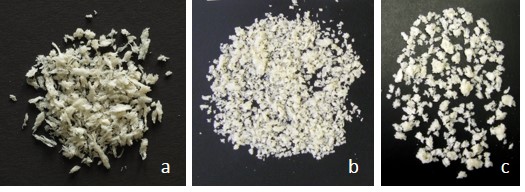
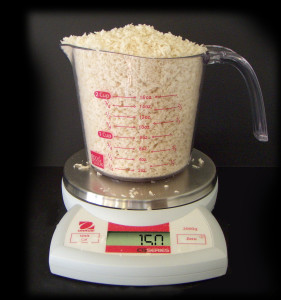
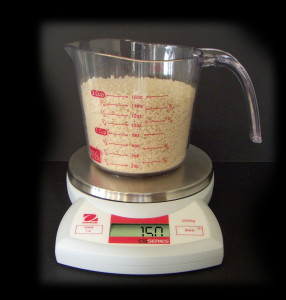
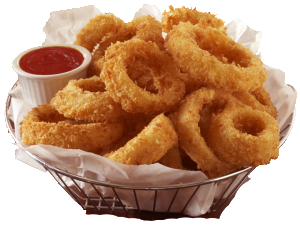
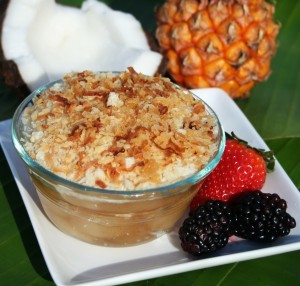

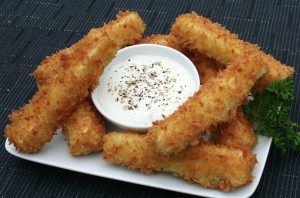
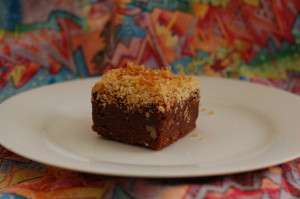
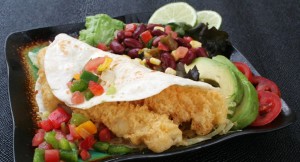



Thank you for providing information regarding Japanese Breadcrumbs. Very informative.
Is Japanese Panko mostly made with rice?
Authentic Panko breadcrumbs are made with wheat flour. Wheat flour is needed to make the special bread loaf which is then ground to create the light airy sliver shaped crumb of authentic Panko